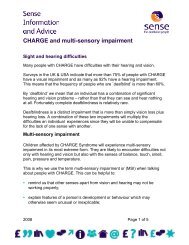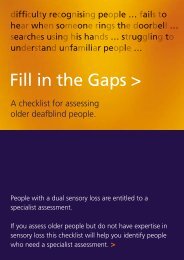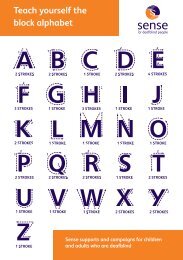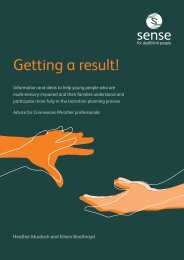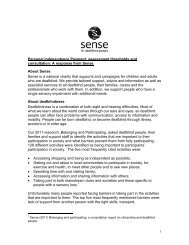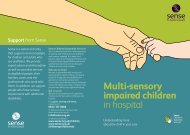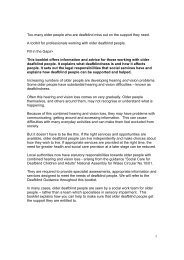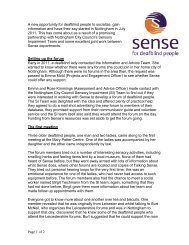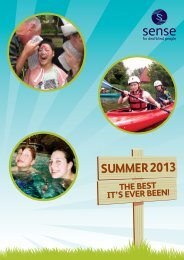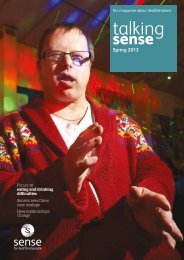MSI Unit Curriculum - Sense
MSI Unit Curriculum - Sense
MSI Unit Curriculum - Sense
Create successful ePaper yourself
Turn your PDF publications into a flip-book with our unique Google optimized e-Paper software.
<strong>MSI</strong> <strong>Unit</strong> <strong>Curriculum</strong>: Phase 2The sensory properties of pupils’ receptive communication modes are analysedand optimised – for example, the size, contrast, colours and surface material ofvisual symbols, or the pace and tone of speech.An increasing vocabulary of symbols (signs/words/photos/symbols) is graduallyintroduced, always in functional contexts. It is recognised that pupils needrepeated exposure to new symbols before they are expected to understand oruse them.Communication always proceeds at the pupil’s pace. This may affect theplanning and delivery of group activities if the pace of individual responseswithin the group varies.Pupils may use challenging behaviour as intentional communication. Responsesto this will vary depending on the severity and functions of the behaviour, butwill always include an acknowledgement of the pupil’s communicative intent.Conceptual developmentPupils discriminate between self and environment. They use repetitivestrategies to explore objects and familiar adults. They understand simple,context-specific cause and effect.Pupils’ engagement with the environment is easily disrupted, causing distressor a retreat into passivity or highly repetitive behaviour. Their exploratorystrategies are idiosyncratic, often using only one sense.Staff identify ways of extending pupils’ range of exploratory behaviours. Somepupils may be willing to explore items in new ways if working coactively witha trusted keyworker. Others may need gradually to adapt and extend existingrepetitive strategies. Some may need to work with an increasing range of itemswhich share one or more particular properties (for example, soft furry textures)but which also have other distinctive features.Pupils are given time to explore the equipment used in daily activities, and areincreasingly expected to recognise the function of familiar items.Any curiosity, however fleeting, shown by pupils about items in the environmentis immediately followed up. Activities and movement around the environmentoccur at a slow enough pace for pupils to express curiosity or choice.Pupils are given frequent opportunities to experience cause and effect in anincreasing range of contexts. Particular care is taken that pupils with more severeor fluctuating sensory impairments can consistently see/hear/feel the effects oftheir actions.44




